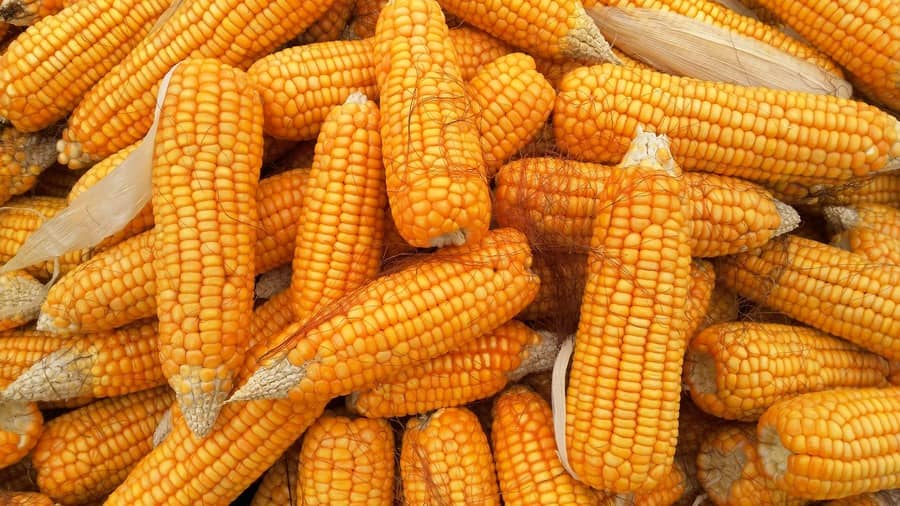Porto Alegre, May 24, 2021 – Corn planting in the Midwest of the United States must be finished in May, within an ideal window and signaling good productivity potential. The point that starts raising concern is the west and north of the Corn Belt, locations that were already dry in the winter and have not yet recovered proper soil moisture levels. June will be important for these locations as they need rain. In North Dakota, some areas would already be abandoned due to the drought. For this reason, when it comes to record productivity this season, we must assess that we have until September for a more concrete assessment of productivity.
The rain for the last few days was very good in the center-south of the Midwest and normal in the southeast. However, they are still below normal in locations that most need rain. This shows there is a need for immediate rain now and regular rain in June. As the situation may worsen in Iowa, it will be no surprise if crop condition indicators also came out not that good in USDA’s weekly reports. In short, the crop is well planted but needs urgent rain in the most affected locations. Soybeans may be more affected in this northern region than corn, as they have a larger area.
The price correction movement on the Chicago Board of Trade continues to buy the idea that the planted area may be larger than expected last March. It would be natural for both corn and soybeans to get a few more acres, for example, one million acres in each culture. Acceptable numbers and within the logic. Areas above this level would imply revealing a planting in regions with higher climatic risk and lower potential productivity, which would reduce the national average productivity. Undoubtedly, until June 30, when USDA updates the number for planted areas in its first survey, private estimates will offer new signals for this previous number and, as always, bring volatility to prices on the CBOT.
However, the figure released by a private company, after the USDA’s May report, was aimed to lower expectations. Markets were rising steadily and almost in a panic movement, even with good and regular stocks in the United States. The private number served to slightly cut this panic movement and redirect prices to a more rational reality. However, the private estimate released may be far from becoming a reality in the June 30 report.
Thus, we have some international indicators to be evaluated, such as:
– Wheat crops in Russia and Ukraine have progressed well. Some pressure on the wheat market can always affect corn;
– The climate in the Midwest will bring the market strong volatility until the month of September;
– The number for planted area on June 30 will have many private assumptions, some well directed to the price effect on the CBOT. However, the reality will only come with the USDA’s data;
– July and August will be decisive months for the production potential of the 2021 crop. For the time being, there are no climatic signs that the Midwest may have serious problems during this period. However, we are in a time of transition from La Nina to neutral conditions, and projection maps can change quickly. Routine attention to climate projection is the key going forward;
– It seems that production losses in Brazil have not been properly evaluated in the international environment yet. Brazil was the world’s second-largest exporter and will give way to Argentina this year. The volumes not exported by Brazil will need to be replaced by other exporters. This international rebalancing will be important until 2022;
– Argentina, on the other hand, is a global unknown. After blocking meat exports, the market believes that at some point the country may adopt the same untimely and arbitrary measure with grain exports. With Congress elections in October, it seems the government is trying to convince the population that local agribusiness is to be blamed for inflation. The stoppage of sales by Argentina could radically change the international corn and soybean environment;
– China has a crop that is being planted and, therefore, also deserves a lot of attention to the climate. Naturally, production losses could create more need corn imports in 2022;
– There is no doubt that USDA needs to revise the data that are released for stocks in China. In ten days, China has bought nearly 10 million tons of US corn, with an average volume of 1 million tons a day. We do not think that China has stock reserves to meet its demand because the government is not even holding auctions to sell corn. Insecurity about China is widespread at the moment. Some say that the country has already made purchases of around 4 million tons for the new crop in Ukraine, which will reach the market from October.
This Chinese scenario shows the uncertainty about the global supply and the tension with the current US crop. If it were not for this China’s buying pace, the international market would be much more balanced. With price lows since last week, China took the opportunity to increase purchases for the arrival of the US crop in September, a period that is also the beginning of the Chinese crop.
Agência SAFRAS Latam
Copyright 2021 – Grupo CMA

